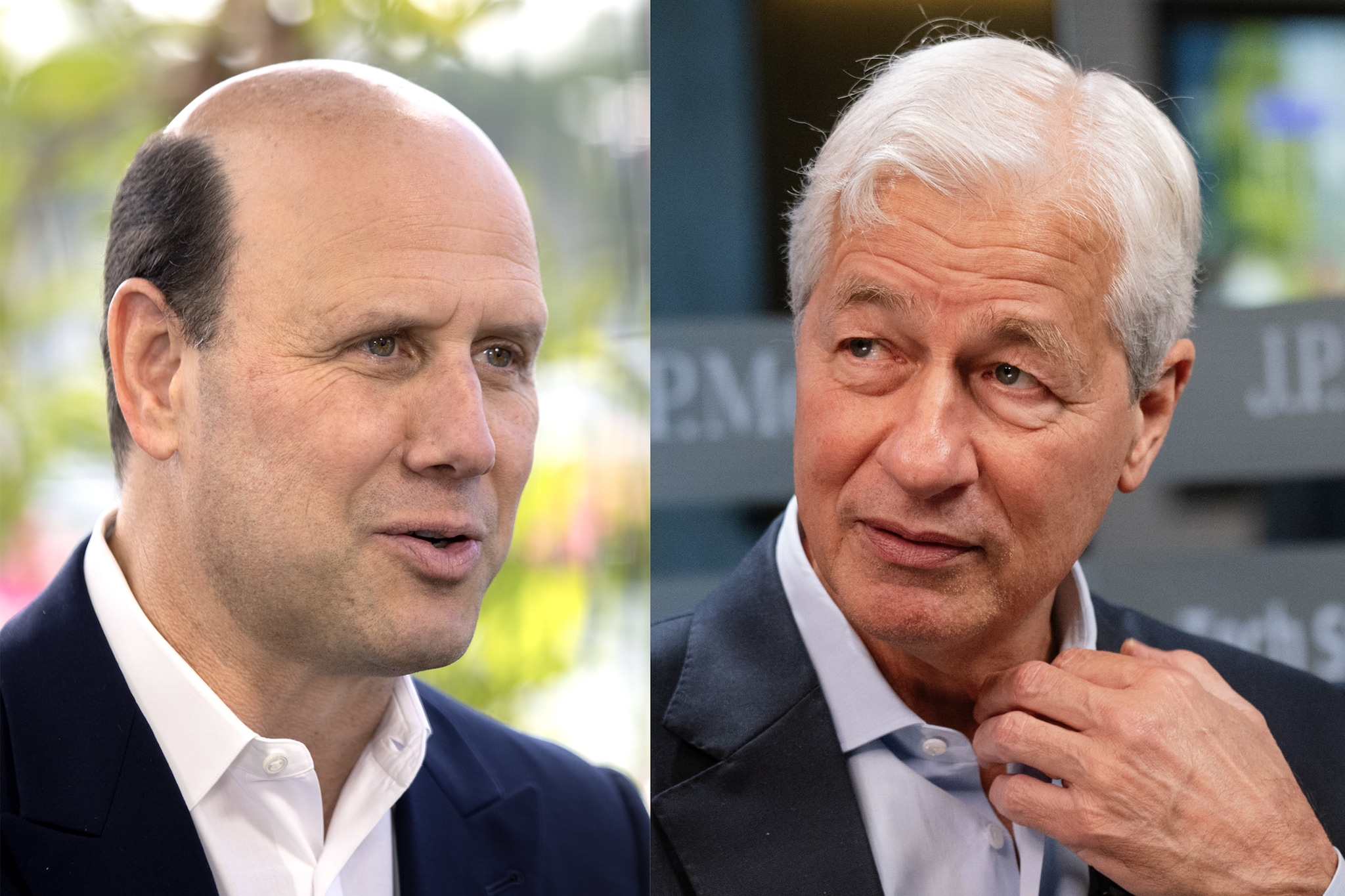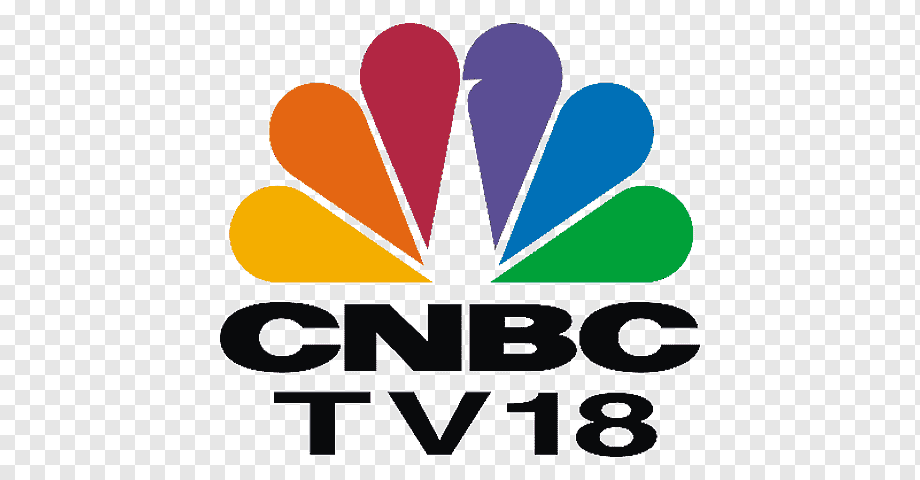Advertisement|Remove ads.
Wall Street honchos bicker over who to blame for credit blowups
The bickering underscores what’s at stake as a tidal wave of change sweeps across the financing landscape. Banks are being forced to cede ground or learn to live alongside upstart lenders, whether they like it or not.

On Wall Street, everyone’s a friendly rival until the losses start.
A pair of blowups in the credit market have sparked a war of words over whether banks or private credit firms are better positioned to weather a broader downturn.
JPMorgan Chase & Co. Chief Executive Officer Jamie Dimon used his bank’s losses from auto lender Tricolor Holdings to say there’s never just one cockroach — a quip some of his nonbank rivals have taken as a shot at them.
Blue Owl Capital Inc. boss Marc Lipschultz fired back, saying the issue was in loans that banks led, so Dimon should be scouring his own books if he wants to squash more bugs.
Lipschultz’s remarks gave voice to the sentiments of a swath of private credit executives. They’ve privately complained that sloppy diligence from banks on Tricolor and car-parts supplier First Brands Group are instead being held up as evidence of growing risks enabled by newer players muscling into lending.
“There are people who have meaningful, parochial interests in the industry not continuing to grow and succeed,” Lipschultz said of the scorn heaped on private-market players. “Blackstone’s market cap exceeds the market cap of most financial institutions in the world today. It’s not as if that’s not coming from someone, and of course those people don’t like it.”
The bickering underscores what’s at stake as a tidal wave of change sweeps across the financing landscape. Banks are being forced to cede ground or learn to live alongside upstart lenders, whether they like it or not.
It risks disrupting a delicate detente over the past few years, as rapidly growing private credit firms have taken some business from banks’ leveraged loan desks, but have also become some of their biggest clients as well as occasional partners.
The clash comes at a time when “there’s land mines starting to go off everywhere,” according to Akshay Shah, who runs distressed-debt firm Kyma Capital.
“Marc is saying it’s in the banking corner, and Jamie might say it’s elsewhere,” he said. “I would say it’s going off in both corners.”
And there are plenty of distressed players out there who can sift through the private credit blowups or the syndicated loan blowups, according to Shah. “Where Jamie is more right, is in public markets those cracks are harder to paper up,” he said.
While many nonbank lenders are sophisticated firms that JPMorgan itself helps finance, it’s a big category and not every player is “very smart,” Dimon said Tuesday.
“We don’t know everyone’s underwriting standards,” he said. “Every now and then we see what someone else is doing, and we’re surprised at their standards, they’re not particularly good, but that’s always been true. I suspect when there’s a downturn, you will see higher than normal downturn type of credit losses in certain categories. I just suspect that.”
Dimon’s comments followed the bank’s disclosure of a $170 million loss tied to its Tricolor exposure that drove higher-than-expected credit costs in the third quarter. “It is not our finest moment,” he said, noting that after such an incident the bank takes pains to scour processes, procedures and underwriting to ensure there aren’t gaps.
“The notion of never letting the facts get in the way of a good story may have gone a bit too far here,” said John Cortese, who runs portfolio management and trading at Apollo Global Management Inc. “These businesses were clearly funded by banks and the public markets. But ultimately, we view this as late-cycle behaviour where market participants got away from the fundamentals, not as something that is pervasive.”
Blackstone Inc. President Jon Gray underscored that point Tuesday at a Financial Times conference.
“Neither of these are what you think of as direct lending or the traditional private credit market,” he said. “To look at those two transactions and then extrapolate that to the private credit market, to me seems a little bit odd.”
Dimon’s comments poured some cold water on one of the private credit industry’s biggest annual gatherings, the CAIS Alternative Investment Summit in Beverly Hills, California. And it’s a sensitive moment for an industry that has grown on the back of strong returns in the past decade, while facing consistent questions about how it will handle a period of higher defaults.
“Private markets get referred to often as sort of like the shadow,” Carlyle Group Inc. CEO Harvey Schwartz said during a CAIS panel. “I’ve never seen a shadow this bright ever in the history of time.”
Many private credit leaders argue that while banks typically extend loans and then sell them to other investors, direct lending funds hold them, forcing those firms to spend more time ensuring they avoid blowups.
“The level and amount of work you can do from a diligence standpoint is dramatically more extensive,” Joel Holsinger, partner and co-head of alternative credit at Ares Management Corp., said on Bloomberg’s Credit Edge podcast. “There probably would have been more ability to do some of the work to unearth some of the stuff that has been alleged.”
Dimon, 69, also ruffled a few private credit feathers on his last analyst call in July. When he was asked if JPMorgan was interested in buying a firm in that area, he said “you may have seen peak private credit,” before backtracking a bit and adding that the industry still had room to grow.
This week, Dimon seized on a technical dynamic that has animated credit investors and attracted bets against such vehicles by sophisticated hedge funds. In particular, many of the biggest private credit business development companies are trading at a notable discount to their net-asset value, indicating that shareholders don’t believe they’ll be able to recoup their investment in full if they pulled money.
Read Also: Rubicon Research GMP points to a listing 30% higher than issue price
A pair of blowups in the credit market have sparked a war of words over whether banks or private credit firms are better positioned to weather a broader downturn.
JPMorgan Chase & Co. Chief Executive Officer Jamie Dimon used his bank’s losses from auto lender Tricolor Holdings to say there’s never just one cockroach — a quip some of his nonbank rivals have taken as a shot at them.
Blue Owl Capital Inc. boss Marc Lipschultz fired back, saying the issue was in loans that banks led, so Dimon should be scouring his own books if he wants to squash more bugs.
Lipschultz’s remarks gave voice to the sentiments of a swath of private credit executives. They’ve privately complained that sloppy diligence from banks on Tricolor and car-parts supplier First Brands Group are instead being held up as evidence of growing risks enabled by newer players muscling into lending.
“There are people who have meaningful, parochial interests in the industry not continuing to grow and succeed,” Lipschultz said of the scorn heaped on private-market players. “Blackstone’s market cap exceeds the market cap of most financial institutions in the world today. It’s not as if that’s not coming from someone, and of course those people don’t like it.”
The bickering underscores what’s at stake as a tidal wave of change sweeps across the financing landscape. Banks are being forced to cede ground or learn to live alongside upstart lenders, whether they like it or not.
It risks disrupting a delicate detente over the past few years, as rapidly growing private credit firms have taken some business from banks’ leveraged loan desks, but have also become some of their biggest clients as well as occasional partners.
The clash comes at a time when “there’s land mines starting to go off everywhere,” according to Akshay Shah, who runs distressed-debt firm Kyma Capital.
“Marc is saying it’s in the banking corner, and Jamie might say it’s elsewhere,” he said. “I would say it’s going off in both corners.”
And there are plenty of distressed players out there who can sift through the private credit blowups or the syndicated loan blowups, according to Shah. “Where Jamie is more right, is in public markets those cracks are harder to paper up,” he said.
While many nonbank lenders are sophisticated firms that JPMorgan itself helps finance, it’s a big category and not every player is “very smart,” Dimon said Tuesday.
“We don’t know everyone’s underwriting standards,” he said. “Every now and then we see what someone else is doing, and we’re surprised at their standards, they’re not particularly good, but that’s always been true. I suspect when there’s a downturn, you will see higher than normal downturn type of credit losses in certain categories. I just suspect that.”
Dimon’s comments followed the bank’s disclosure of a $170 million loss tied to its Tricolor exposure that drove higher-than-expected credit costs in the third quarter. “It is not our finest moment,” he said, noting that after such an incident the bank takes pains to scour processes, procedures and underwriting to ensure there aren’t gaps.
“The notion of never letting the facts get in the way of a good story may have gone a bit too far here,” said John Cortese, who runs portfolio management and trading at Apollo Global Management Inc. “These businesses were clearly funded by banks and the public markets. But ultimately, we view this as late-cycle behaviour where market participants got away from the fundamentals, not as something that is pervasive.”
Blackstone Inc. President Jon Gray underscored that point Tuesday at a Financial Times conference.
“Neither of these are what you think of as direct lending or the traditional private credit market,” he said. “To look at those two transactions and then extrapolate that to the private credit market, to me seems a little bit odd.”
Dimon’s comments poured some cold water on one of the private credit industry’s biggest annual gatherings, the CAIS Alternative Investment Summit in Beverly Hills, California. And it’s a sensitive moment for an industry that has grown on the back of strong returns in the past decade, while facing consistent questions about how it will handle a period of higher defaults.
“Private markets get referred to often as sort of like the shadow,” Carlyle Group Inc. CEO Harvey Schwartz said during a CAIS panel. “I’ve never seen a shadow this bright ever in the history of time.”
Many private credit leaders argue that while banks typically extend loans and then sell them to other investors, direct lending funds hold them, forcing those firms to spend more time ensuring they avoid blowups.
“The level and amount of work you can do from a diligence standpoint is dramatically more extensive,” Joel Holsinger, partner and co-head of alternative credit at Ares Management Corp., said on Bloomberg’s Credit Edge podcast. “There probably would have been more ability to do some of the work to unearth some of the stuff that has been alleged.”
Dimon, 69, also ruffled a few private credit feathers on his last analyst call in July. When he was asked if JPMorgan was interested in buying a firm in that area, he said “you may have seen peak private credit,” before backtracking a bit and adding that the industry still had room to grow.
This week, Dimon seized on a technical dynamic that has animated credit investors and attracted bets against such vehicles by sophisticated hedge funds. In particular, many of the biggest private credit business development companies are trading at a notable discount to their net-asset value, indicating that shareholders don’t believe they’ll be able to recoup their investment in full if they pulled money.
Read Also: Rubicon Research GMP points to a listing 30% higher than issue price
Read about our editorial guidelines and ethics policy

/filters:format(webp)https://news.stocktwits-cdn.com/resized_bse_bull_image_jpg_abc06f4b94.webp)
/filters:format(webp)https://news.stocktwits-cdn.com/Revised_Profile_JPG_0e0afdf5e2.webp)
/filters:format(webp)https://news.stocktwits-cdn.com/large_stock_market_fall_generic_jpg_f7dffafa95.webp)
/filters:format(webp)https://news.stocktwits-cdn.com/vivekkrishnanphotography_58_jpg_0e45f66a62.webp)
/filters:format(webp)https://news.stocktwits-cdn.com/large_Getty_Images_1165816703_1_jpg_ce76baeb7f.webp)
/filters:format(webp)https://st-everywhere-cms-prod.s3.us-east-1.amazonaws.com/IMG_9209_1_d9c1acde92.jpeg)
/filters:format(webp)https://news.stocktwits-cdn.com/large_stock_generic_resized_jpg_3444b70edf.webp)
/filters:format(webp)https://news.stocktwits-cdn.com/IMG_8805_JPG_6768aaedc3.webp)
/filters:format(webp)https://news.stocktwits-cdn.com/large_stock_generic_jpg_2945cbdb9c.webp)
/filters:format(webp)https://news.stocktwits-cdn.com/large_IMAX_resized_jpg_0e1e6d0b30.webp)
/filters:format(webp)https://st-everywhere-cms-prod.s3.us-east-1.amazonaws.com/shanthi_v2_compressed_98c13b83cf.png)